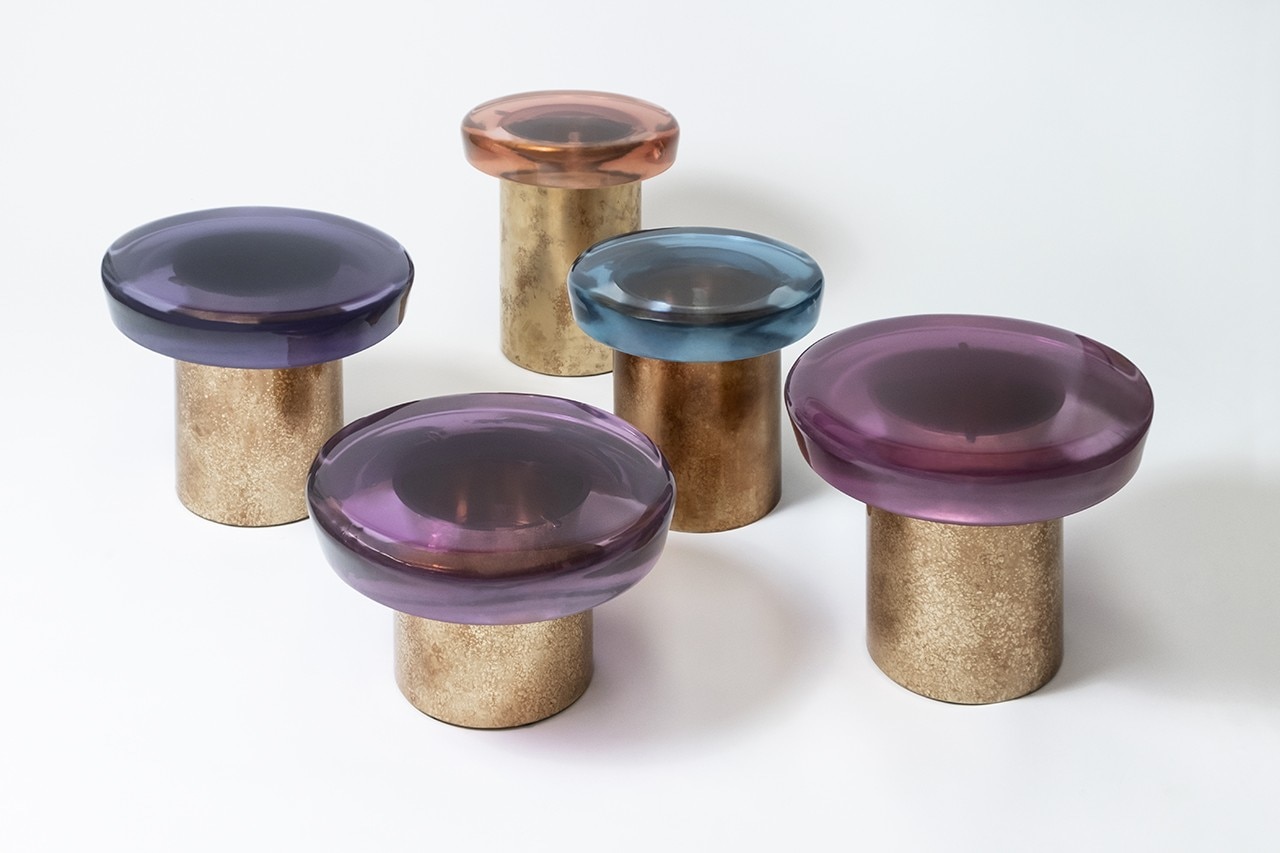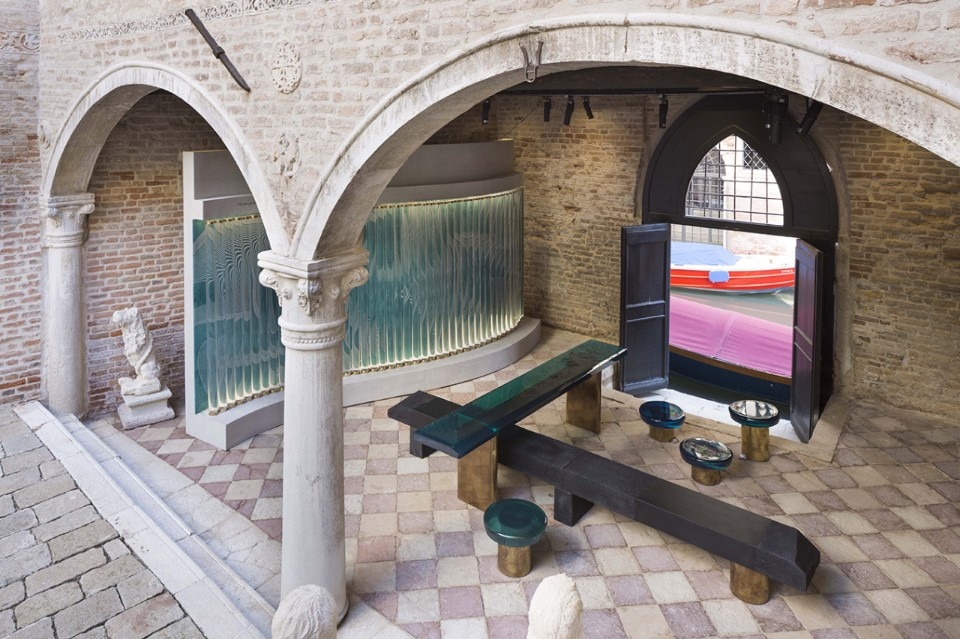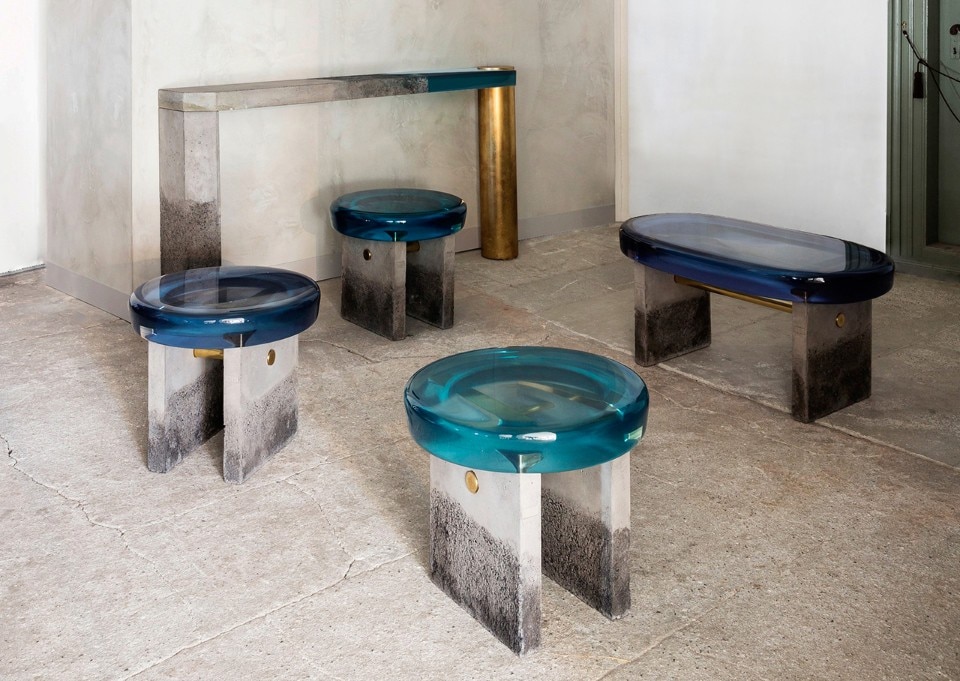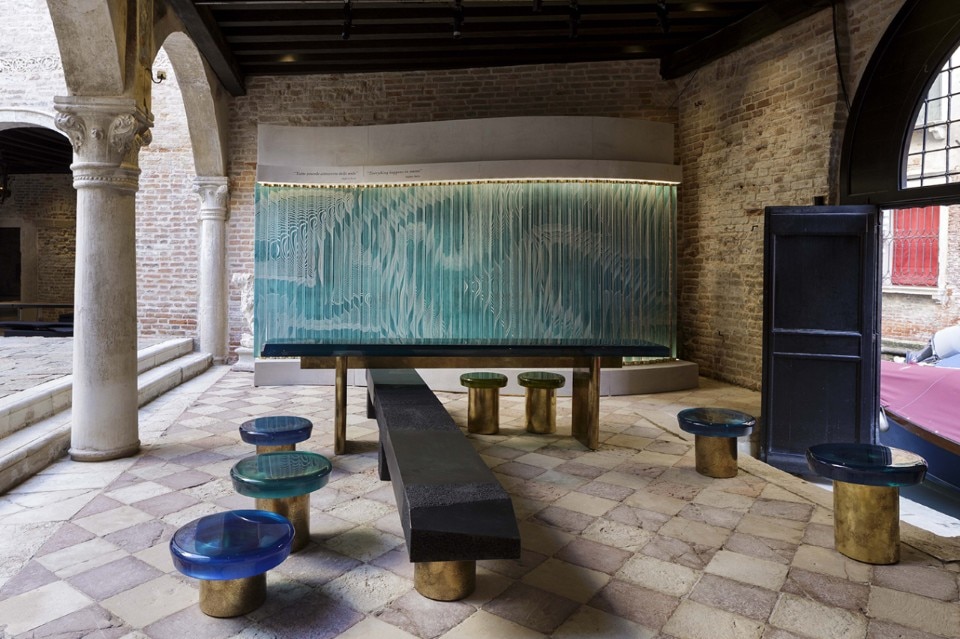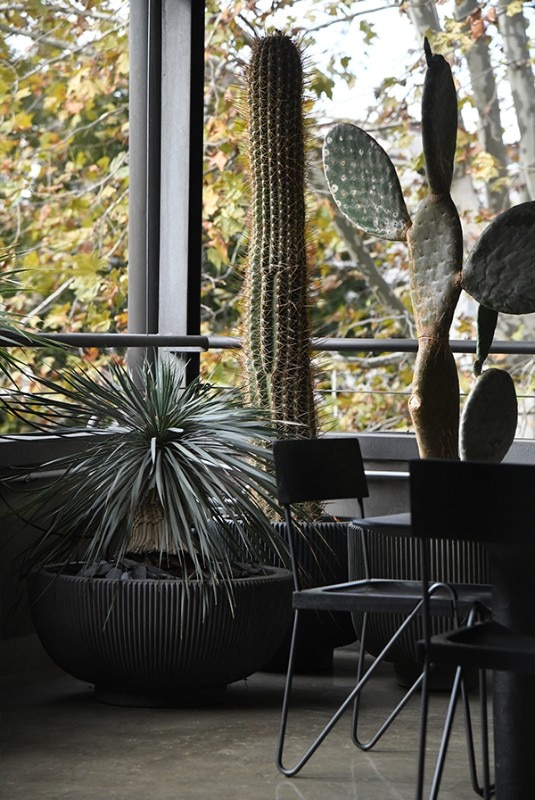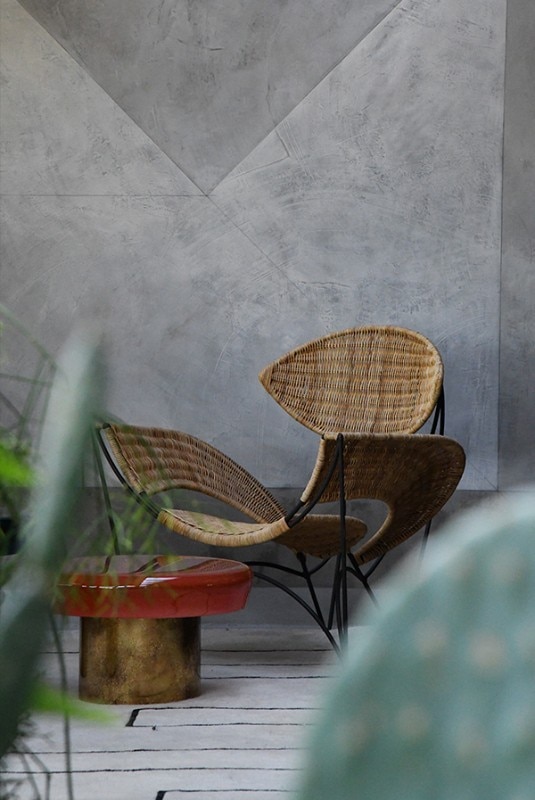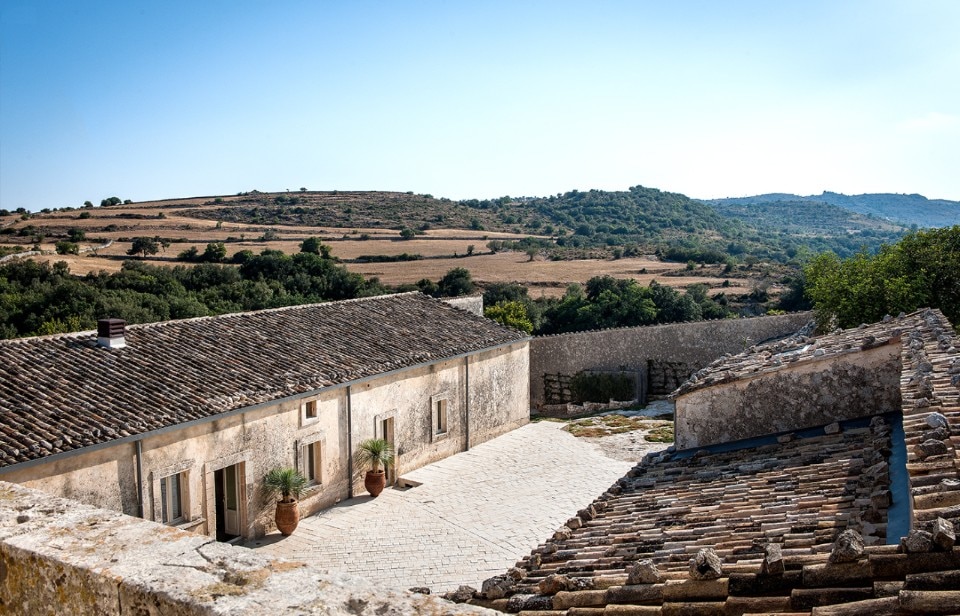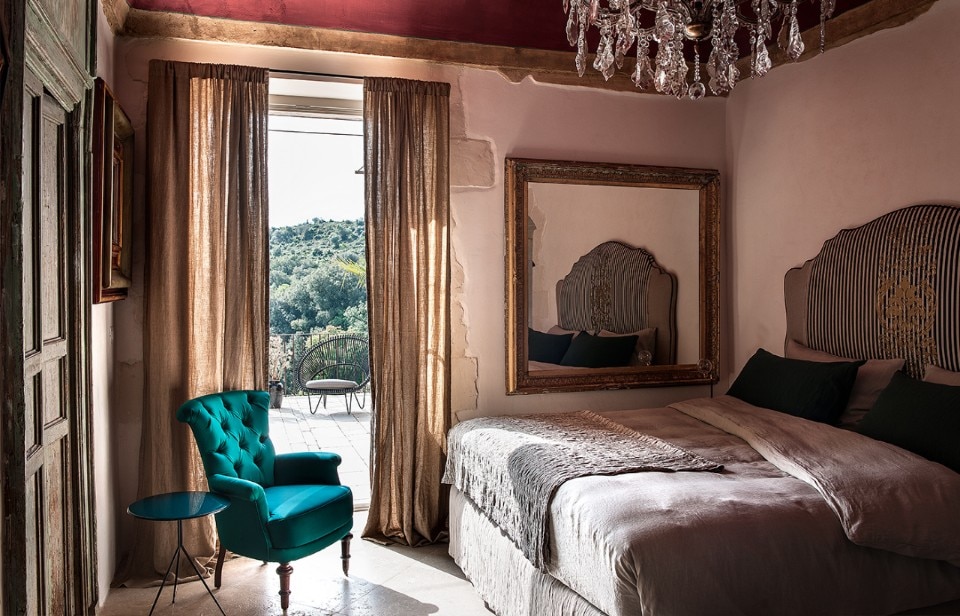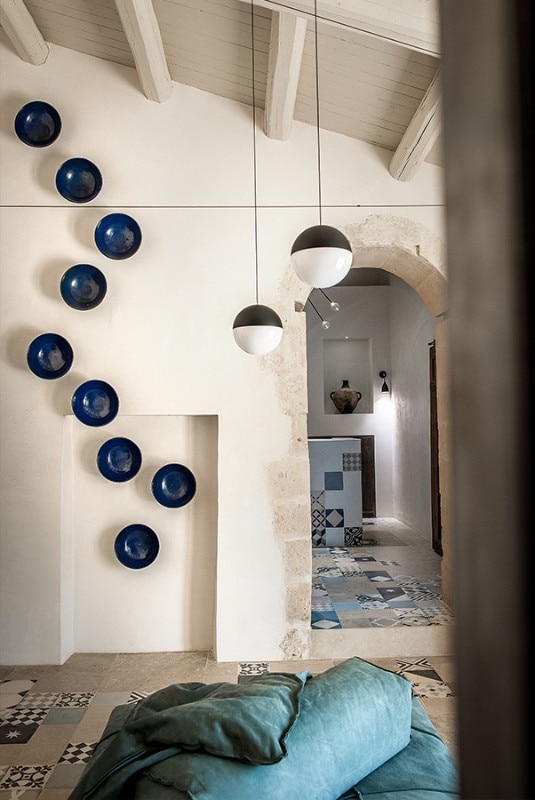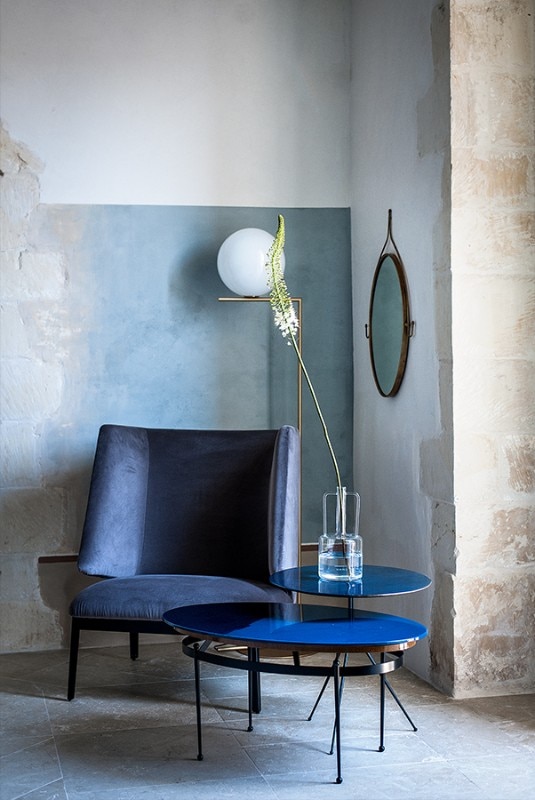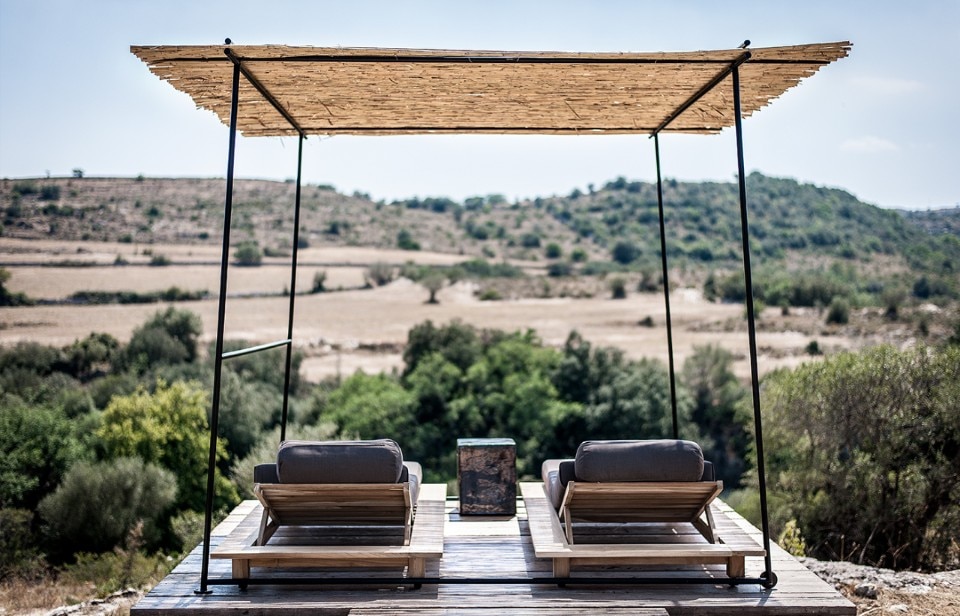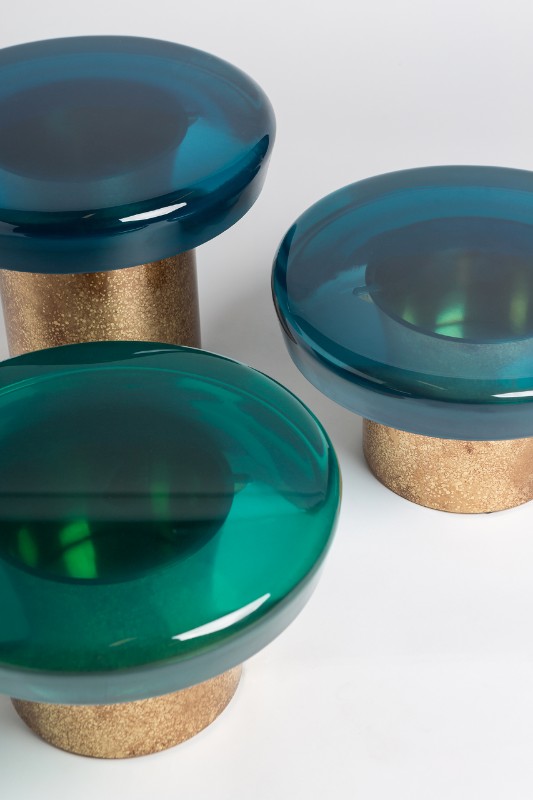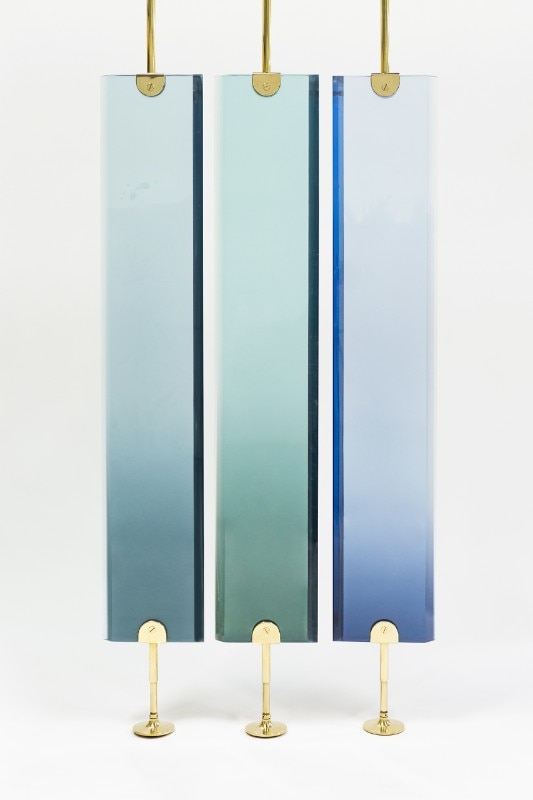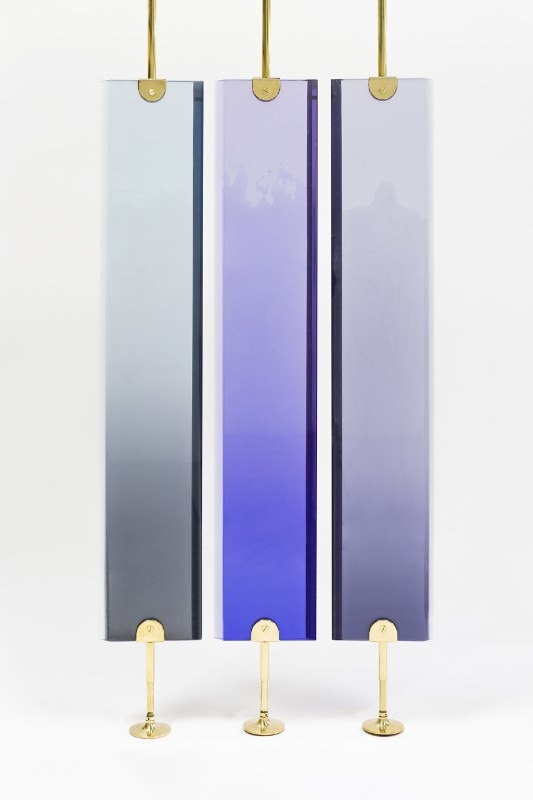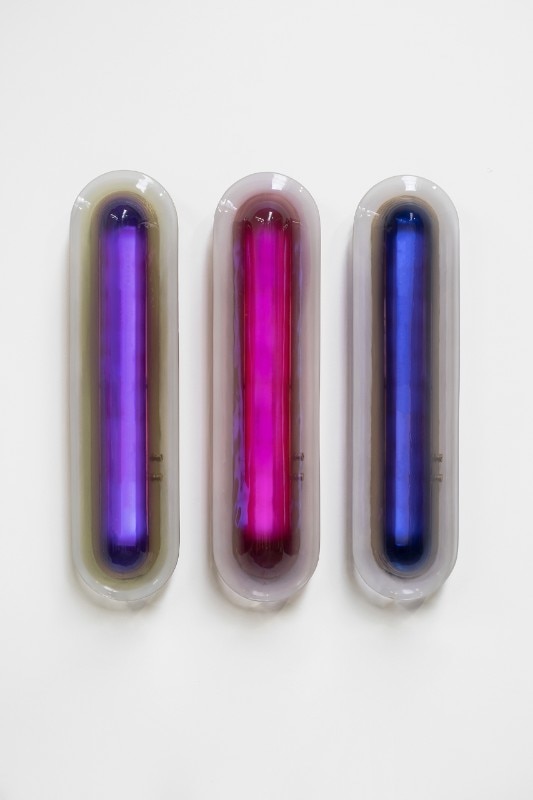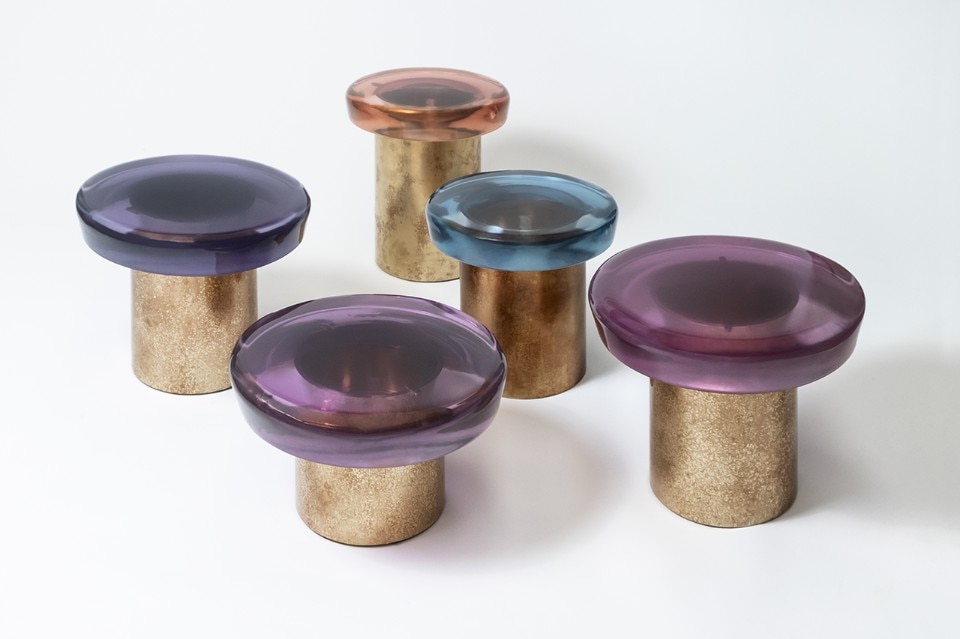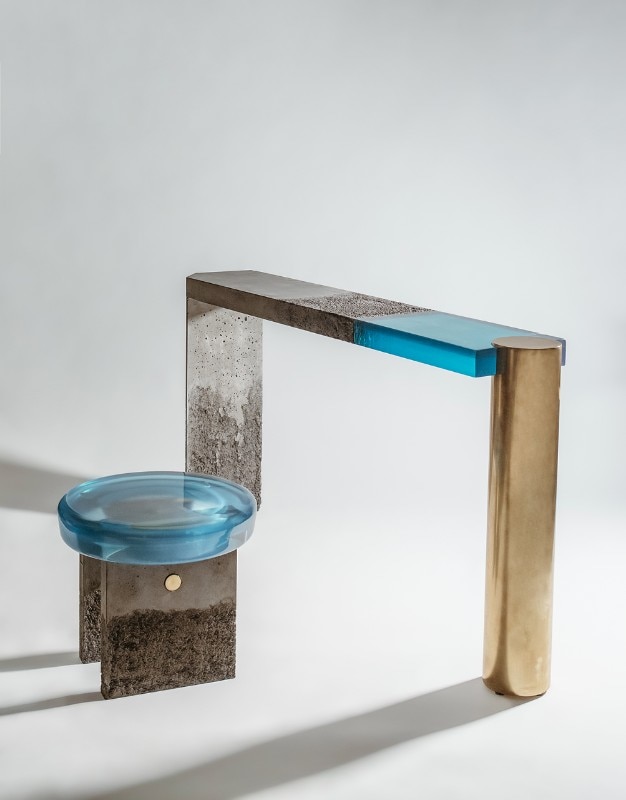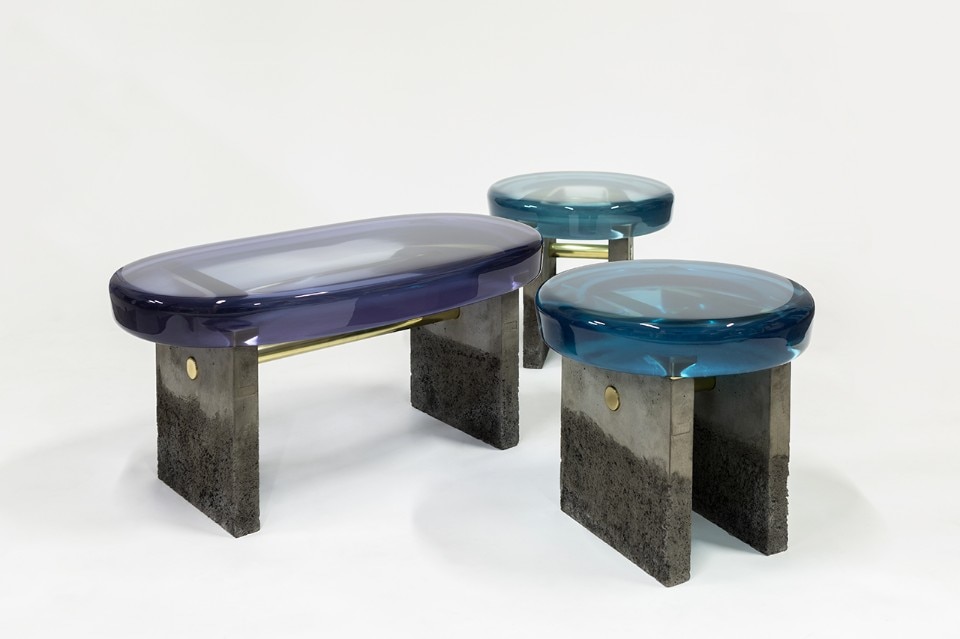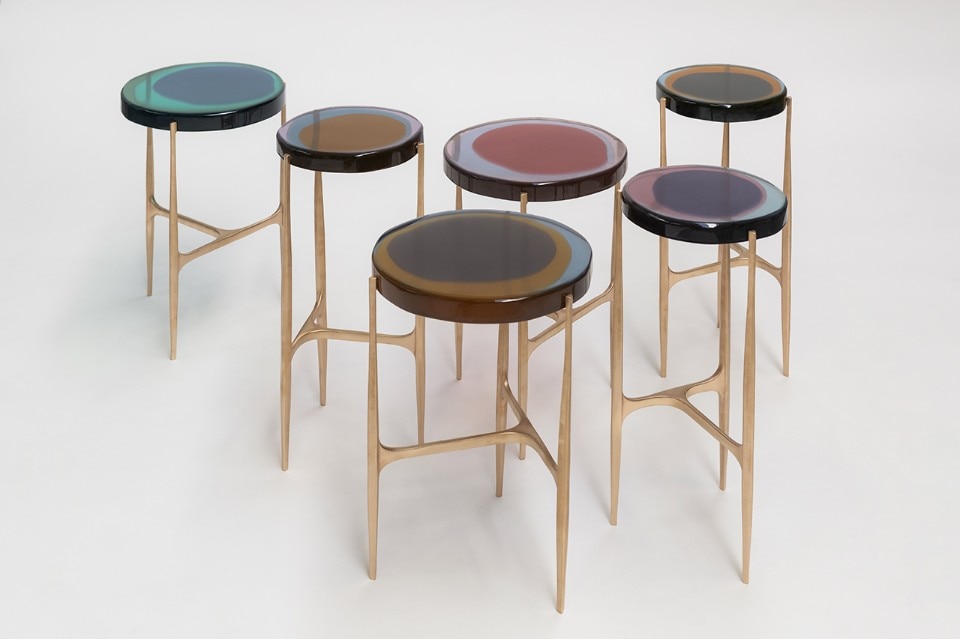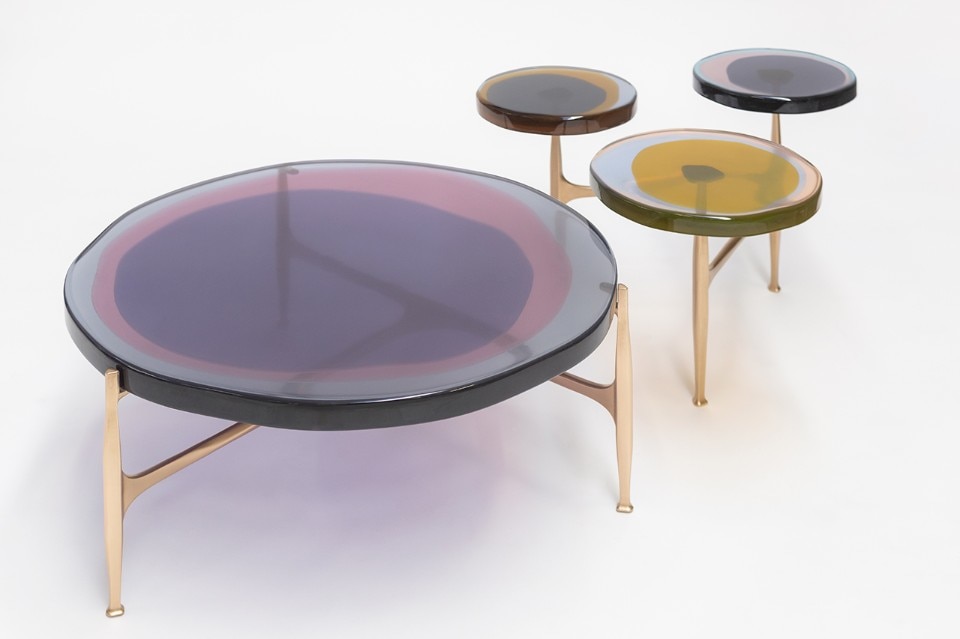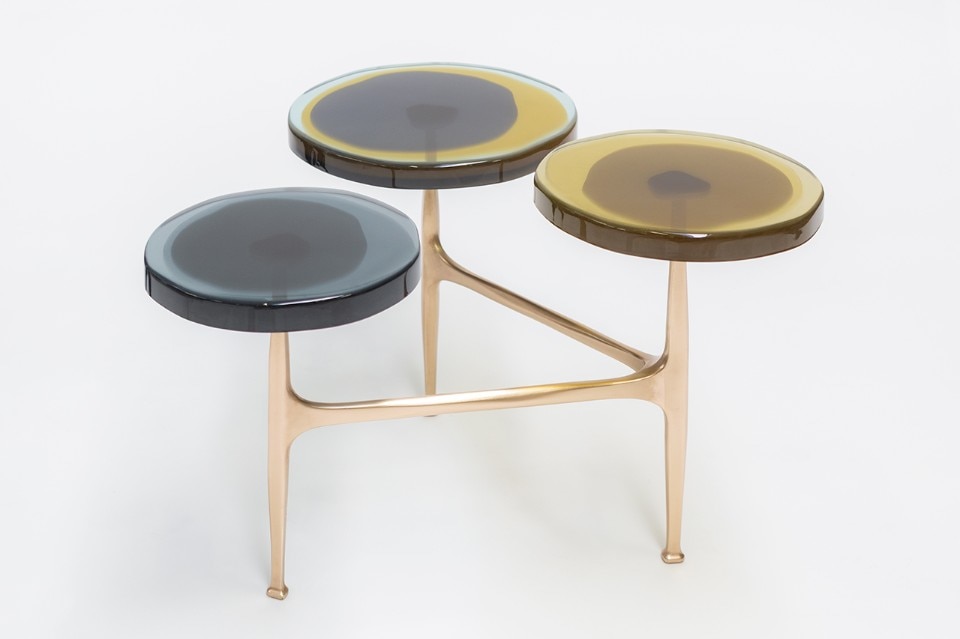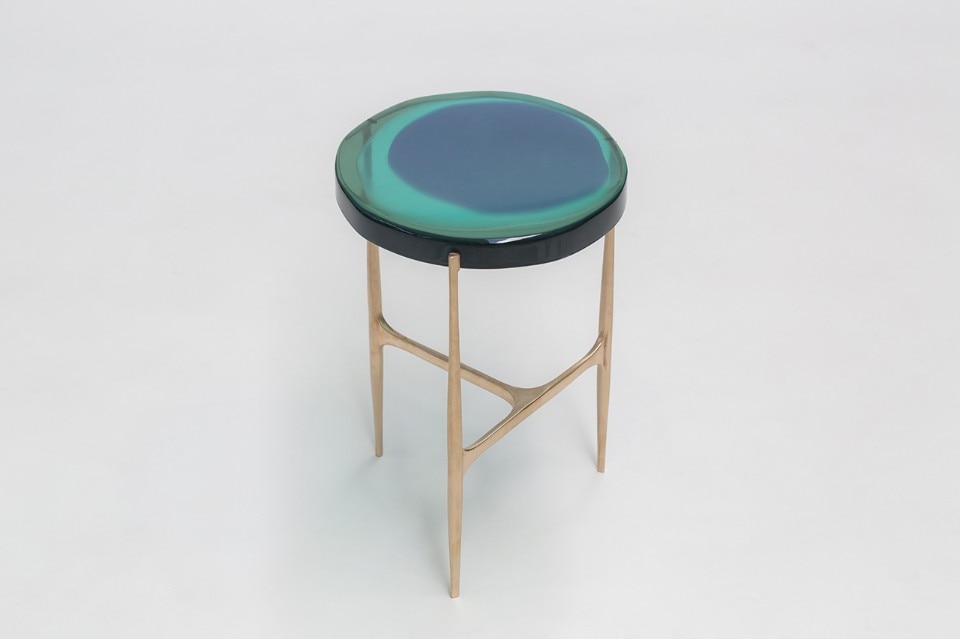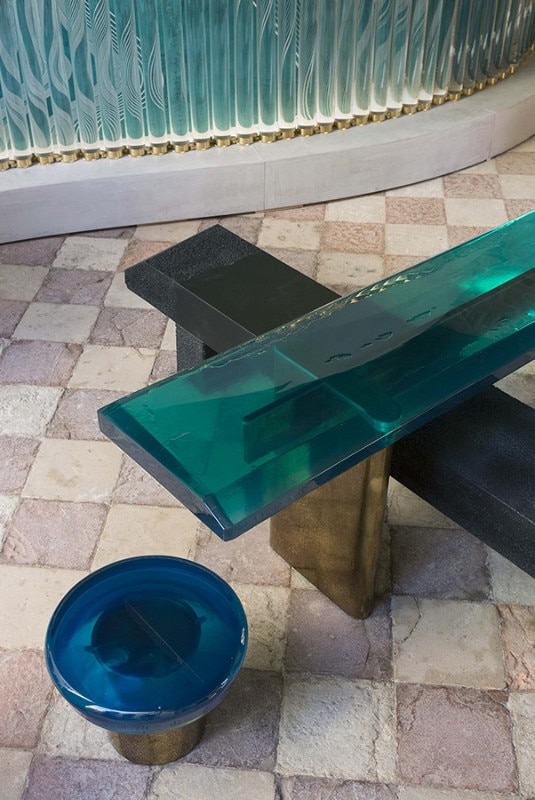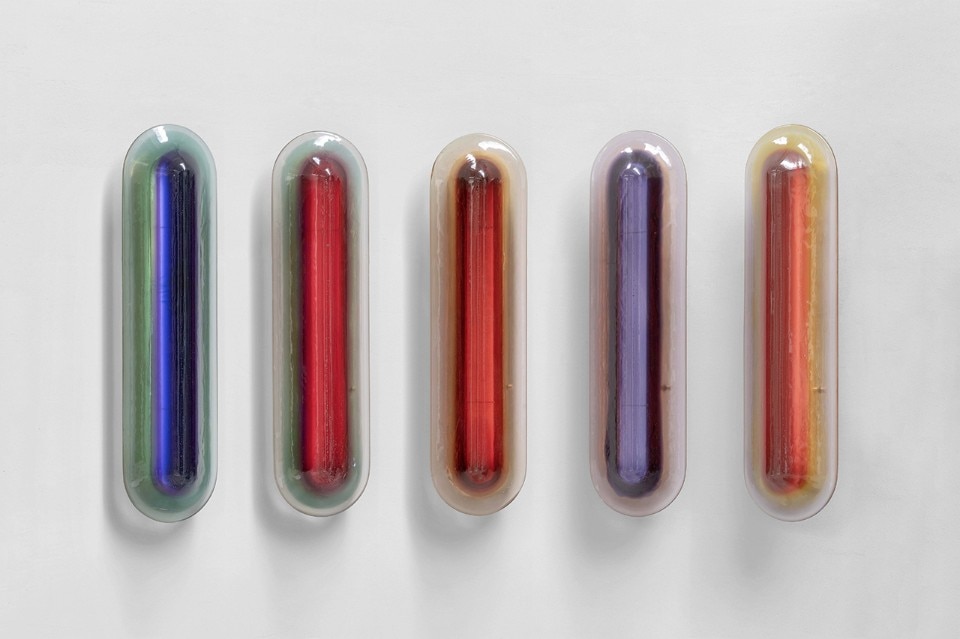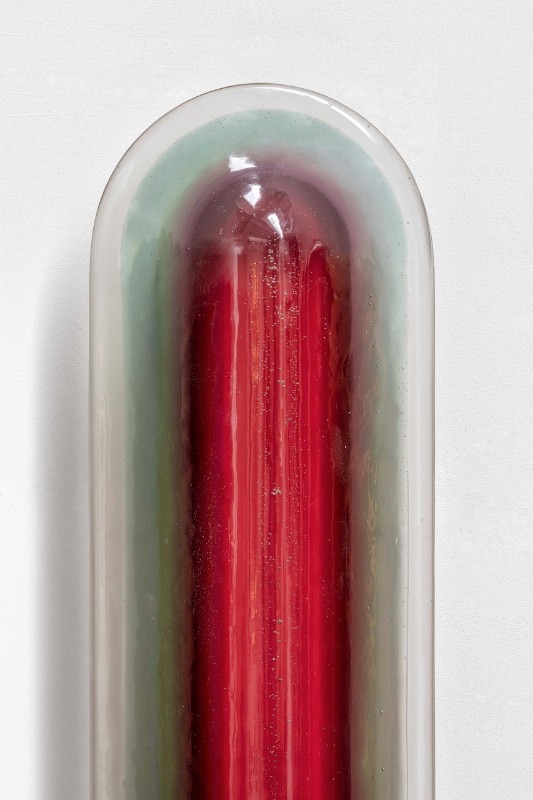Couple in work and life, Draga Obradovic and Aurel K. Basedow have been developing the concept of art design for over ten years. He is an artist of German origin and she is a designer of Serbian origin, they consider themselves artists-craftsmen who met design along the way, in Italy. With their objects and paintings they narrate the deeds of the past, of a mythical design whose nostalgia is reinterpreted, with freshness. From their atelier on Lake Como they talk about origins, birth and death of projects and the demons that undermine creative processes.
You are a bit artisans, a bit artists but also designers. How was Draga&Aurel born?
Draga: We were born ten years ago, just recovering furniture, reinterpreting chairs and tables with what we had available, from hand-painted fabrics to resins. This work can be seen in our Heritage collection. Transparency, instead, was born as a synthesis of these ten years. The core material, to which we are very close to, is resin. Over the years we have gone from resin copy, that is, coating surfaces with this material, to the creation of thick resin objects, contaminating them with other materials that had something in common, from molten glass to plexyglass, from methacrylate to fiberglass - in short, all those materials that require moulded technology.
Aurel: We are manufacturers and this is our strength. Working on resins is a long, difficult process, which is why we do it internally, in our wharehouse in Como, as well as the decorations and moulds. We were born first as artists, a bit artisans, and then we became designers along the way... or maybe we never did! We don't like to define ourselves too much.
We both come from an artistic path, that of painting, to which I have returned in recent years for a personal need that combines well with the experimental research done in the past with cement, walls, floors, decorations, resin.
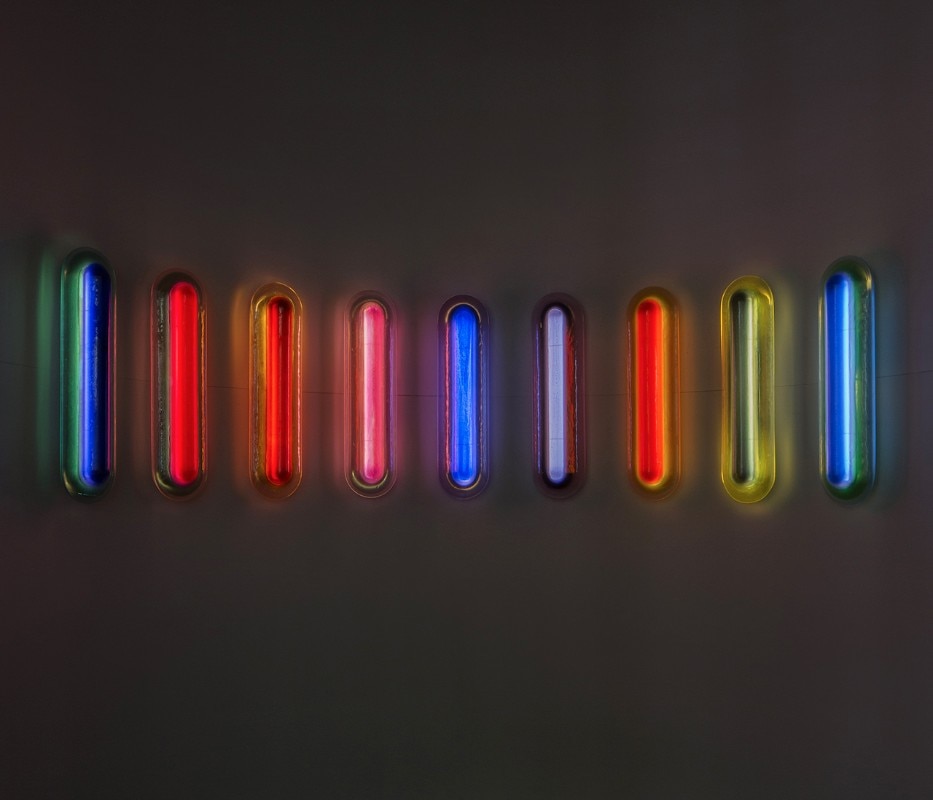
What do the objects you produce carry with them? Do they have an autonomous, sculptural value that speaks of you, or are they designed to exert a specific influence in the space in which you place them?
Draga: The work Trasparency brings with it both artistic and historical design references, which we love to explore and recount. Take, for example, the Space Age: it fascinates me to bring that world back to light, to know that behind an object there is a story that doesn’t just tell a lifestyle, but an idea of society, an expression, new materials, the dream of landing on the moon, an enthusiasm that contaminates everything.
So when I go searching for these things, I like to remember them through a completely new gesture, let’s call it repowering: looking at an object from the 60s with the eyes of 2020s. In the methacrylate lamps, for example, there are references to Googie architecture, which for 15 years was very popular and iconic, then became almost ‘ugly’, forgotten. Then, after a while and with the ingredient of time, it became iconic again. It fascinates me very much to contextualize certain objects and shapes over time, just like with the Judd lamps, linked to Donald Judd’s minimalism and renamed in his honour.
For painting, it’s a little different....
Aurel: It’s different. We propose an unusual format because painting is usually separated from design, while in our case it is the starting point. My paintings are created by me independently and then they flow into a design project, or vice versa. An inseparable dialogue between art and design is born and the works we make must be observed as a whole, without the artwork becoming a decorative object.
Draga: It’s a bit of an open dialogue between us. Who is the artist? Is it him who paints, trying to express this intimate, meditative world... Or is it me? Why can’t it be me? Just because I can replicate my coffee table? In short, there is this open dialogue, because the artistic process and presence during creation is very strong in both cases and cannot be delegated.
Aurel: It’s a contamination...
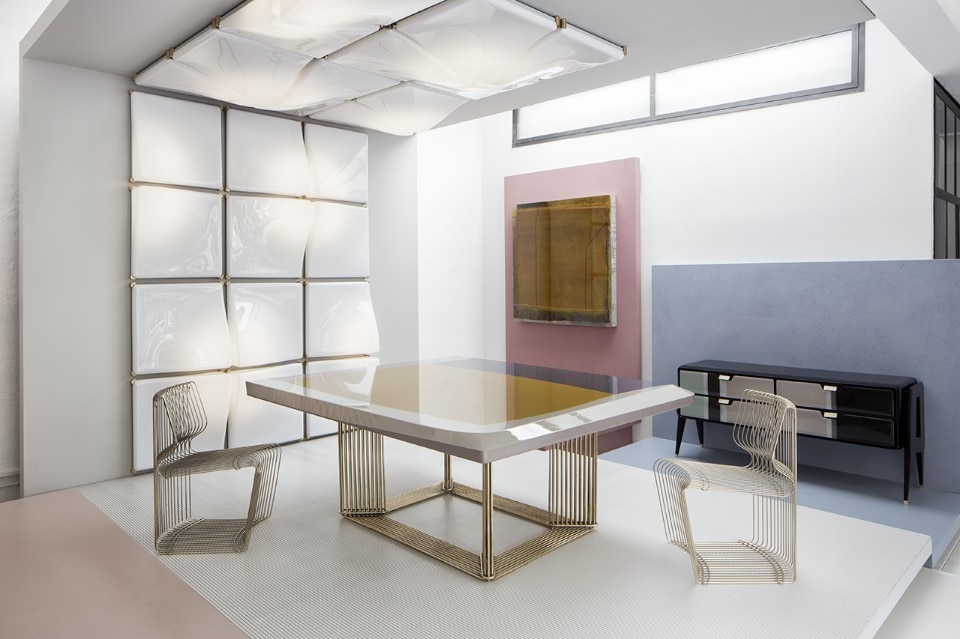
It is easy to imagine an artist who turns his nose up at a design object for an alleged lack of depth or conscience of what the object represents. Same goes for the designer, who could see the artist perched in his world, a bit disconnected from society, from a certain pragmatism. Does something similar happen to you? How do you resolve this divergence?
Draga: Once I decided that I was the most creative.
Aurel: You decided that.
Draga: I decided it myself. And he got offended and an argument started...
Aurel: A discussion that has been going on for years. We could linger for years on the validity, the difference and the depth of interpretation of this sentence. Very interesting.
Draga: I said it referring to the variety of objects I create and think about... he only does paintings (laughs).
Aurel: I only do 150 paintings a year so I’m very limited (laughing).
Draga: So I decided that I was the creative one and that he, boringly, only paints. (Laughing)
You know what? We are creating a lot and we are very fertile in this sense, but often we do not have the answers, we do not always understand what we are doing. Because one thing leads you to another, you create synapses, connections, reciprocity. And this is even more amplified when there is a collaboration with a company and you approach another world, another head.
What moves you? Are you driven by a cheerful search, by curiosity, by a state of concern about major themes or by a state of contemplation, of strong intimacy or expansiveness? What drives you? And the things you do represent who you are and where you want to go?
Aurel: I would say that we need to find something, the thirst to discover that it is within us as artists. This is a basic seed. A life quest that is no longer separable from work. Starting from this deep desire we have constantly asked ourselves, from the beginning, “what do I want to do?” but, above all, “at whatever cost I have to do what I feel like doing”. Almost like a philosophy of life: I must be authentic to myself. It's not indoctrination, it's an inherent thing. A nature for which I can do nothing more than what I want to do. This way you can express yourself in the best possible way...
Draga: I must fall in love. I must be in love with something. And that something can change. Passion, enthusiasm are components without which I can't do anything at all. Then sometimes it can happen that I get lost... But falling in love can happen during a walk, while visiting an exhibition, if I find an armchair or an object that intrigues me and triggers my imagination. It's a bit like seeing things within things. Changing perspective, getting out of context - so a bathroom ceiling light becomes a mega-installation and a pillow ‘‘becomes a painting.
Aurel: Anyway, the ideas are infinite. Ideas are like an uncontrollable volcano: but then you have to realize them somehow, you need to give them shape.
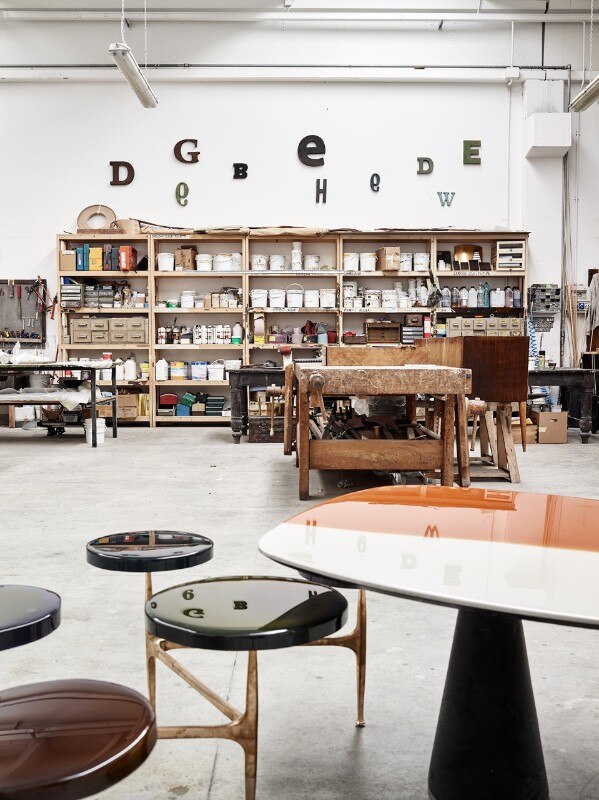
When you finally succeed in producing a work, is it as if it is already finished or is it the moment when it starts to live? How do you see it, as an end or as a beginning?
Draga: That’s a good one too. It’s always a bit different, for him and for me.
Aurel: During the creation I’m a pretty lonely guy, apart from the collaborators who wash my brushes and move the paintings, that are quite heavy. I find myself in a bit of a struggle with myself and the painting, absorbed. When I’m finished, I get shivers for a moment. I’m surprised and the more I like the painting the more I feel like I didn’t do it, as if it was a gift. There is a first fall in love, then amazement, then real love for the good paintings... and in the end I get over it.
Draga: A bit like marriage...
Aurel: And then I’ll go on.
Draga: For me it’s like giving birth to characters with whom I tell stories. The Jade tables, for example, made of transparent green resin and a cylindrical brass base, once they were brought to Nomad Venice they took on another meaning, they became the Venetian bollards where boats are tied up, and we called the setting “Ormeggi”.
Aurel: Well, that’s why I have to compliment my wife who has this ability. She’s not just a designer who makes products, but manages to create “associative” spaces that also have a historical meaning. Interior in the true sense of the word. The project in Venice was really complete.
Draga: We had positioned some Jade on the steps of access to Palazzo Soranzo and when the water rose they were submerged, as if they had another life. It was wonderful.
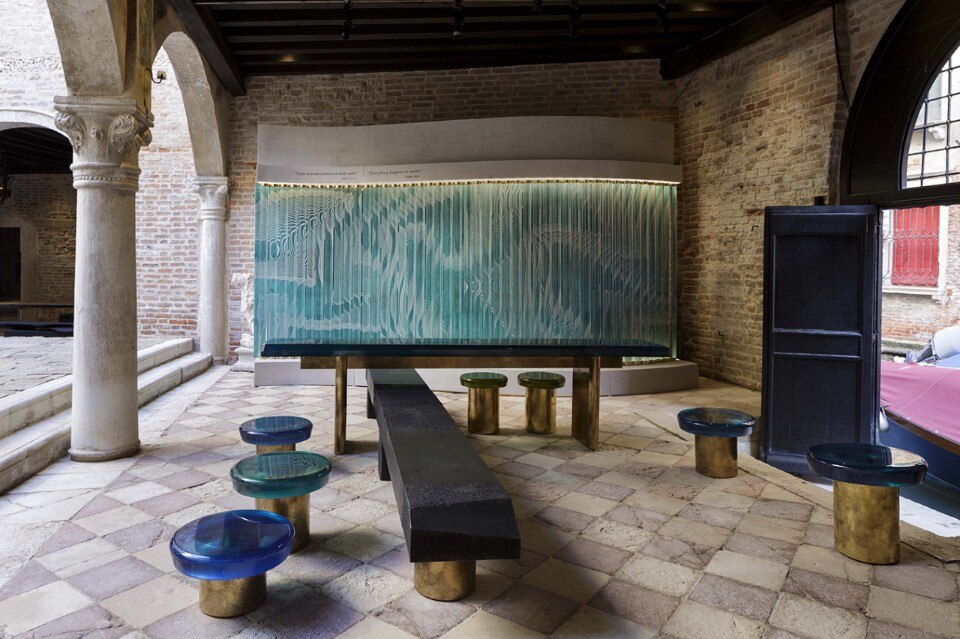
And what is your enemy? What is the monster that prevents you from reaching this state of grace, the one that blocks the creative flow?
Aurel: Let’s say it’s all the bureaucracy we have around us that we have to fight against. Sometimes we look at each other and we’re exhausted. One time you fight with one person, another you have to defend yourself... there are a lot of organizational complications, besides the responsibility for the many employees. Sometimes we get home and we cry and say “but I just want to be creative, I just wanted to do my thing!”.
Draga: In my case the enemy is doubt. The planet of doubt, when it positions and turns into a slow planet that persists in the house of creativity, to use an astral metaphor. It is an important thing to live, but very difficult to welcome inside and to breathe without it becomes paralyzing. So, doubt when it paralyzes is certainly an enemy, but when it is welcomed it is a great opportunity for transformation.
Aurel: Doubt is certainly a feature of intelligent people and this is a consolation. Artists are very afflicted by this demon, aren’t they? On the one hand there is ecstasy, conviction, and certainly a lot of gratitude for what you have achieved so far, but overnight you can quickly fall down and have strong doubts about the value of what you do.
And not only that. Even if an artist should strongly believe in himself, one is always dependent, in a certain sense, on the appreciation of others. If no one in these ten years had ever told us “what beautiful things you do” perhaps today I would believe a little less in me. But even when you get a general appreciation (and I say this with gratitude), in our inner self as artists you can always collapse to zero easily. At least as far as I’m concerned. There are days when I say: “But I don’t really know how to paint. I’ve been lucky all these years.” Or when I look at a painting I say, “No, that wasn’t me.” Afterwards, though, we’re helped by people who in ten years keep believing in us. It’s an innate conflict. On the one hand, this incessant source of ideas, on the other, our temperament that leads us to doubt.
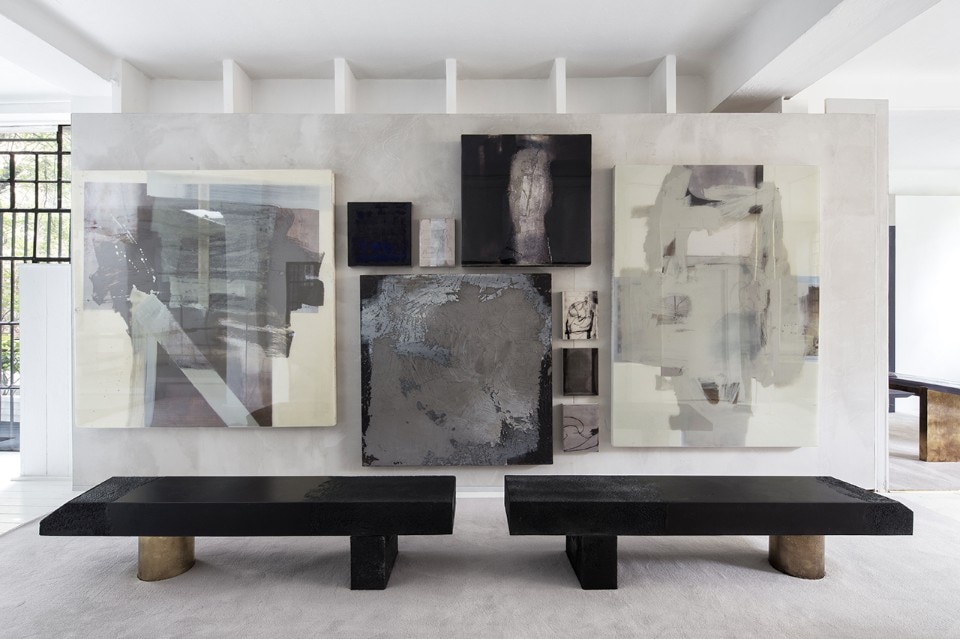
What are your origins? And, accepted or not, are they present in your work today?
Draga: Let’s say that I came to Italy in 1984, so I was 20 years old, 36 years ago. I came to stay for a year because I wanted to have an experience at the Academy of Fine Arts in Florence, then they didn’t accept the two years of the academy that I had done in Belgrade, and I had to start again a little bit. The time passed and, almost without wanting to, I stayed here forever.
At that time I was Yugoslavian and very proud of everything that was our history. Even the image we had given of us in the world. Then came the years of balkanization, of wars, of atrocities, and it was very hard. I changed citizenship several times. From Yugoslavian to Ex-Yugoslavian, then something else, now I am Serbian, and also Italian.
So let’s say that these origins are definitely in my DNA, that temperament of Eastern European people. This tenacity that makes you say that there is never really a problem, that you will always find a solution, that you will never stop... this attitude has helped me a lot in life.
As a child I grew up with convictions, then I abandoned them, at the age of 16-17 I thought “I don’t think that everything they’re telling me is true”; I joined the Communist Party, things like that, and then I found myself in Italy and again being a bit more leftist, but with the problems it brings with it: a big mess.
So in my head there’s a refusal towards something absolute. And I do nothing but question myself, to see the other side of the coin. I grew up having to believe and then think again and go on like this to try to understand what the reality was and what happens around us.
Aurel: Honestly, I don’t remember the question because your answer was so long...
The origins.
Aurel: Frankly, I can’t identify with what I do... with what I would be in action.
Draga: It’s called a defence mechanism.
Aurel: You think so? I left for a purely romantic reason. The decision to come to Italy, as it is written in my CV, was the sound of swallows and the smell of the sea in Vernazza, Liguria. I was four years old the first time, the second six or seven, and from then on this desire was deep inside me. Then, when I was 26 years old, I did an apprenticeship in carpentry, then I loaded my car, and I came here. It’s 30 years now... and I can’t really identify myself as a Germanic subject.
Draga: Then if you see his paintings, you can tell he is German. (Aurel protests, saying they’re opinions, but she insists). There’s the materiality of Anselm Kiefer, there’s Richter’s brushstrokes.
Aurel: I strongly identify style- and emotions-wise with the American expressionism of the 50s and 60s. It’s natural to me. All right, I like Joseph Beuys and his Erweiterter Kunstbegriff theory (expanded concept of art, Ed.) so much that we are also practicing it in a way. As I said before, and I don’t want to be presumptuous, we have a hard time getting people to understand that this is painting, not decoration. It’s artdesign! This is our vision of art. Enlarged (they say together).
What is the object you wanted to draw but someone else had already made it?
Draga: Maybe it’s not an object but a person... I’d say Gio Ponti. I admire those figures that have marked a break with architecture, style, decoration, that have shaped the world, putting so much identity in the things they did. So yes, I would like to be Gio Ponti. Draga Ponti!
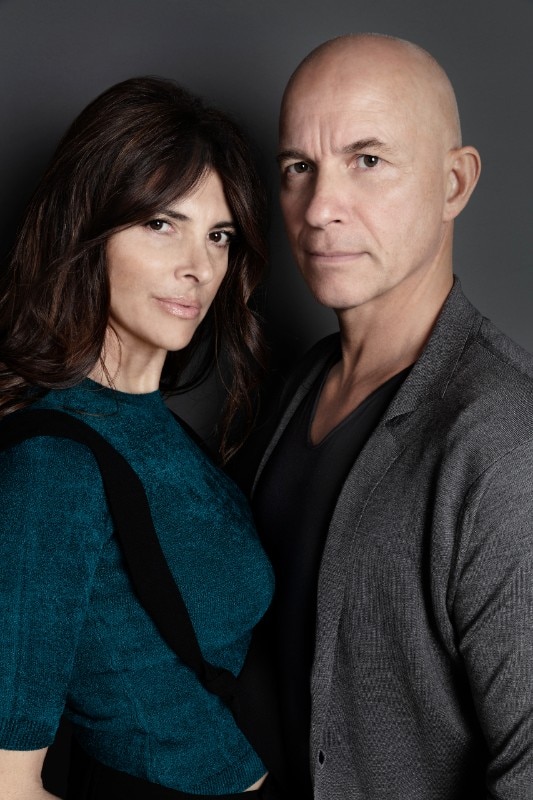
Draga & Aurel opened its doors in 2007 on Lake Como and today has about 20 employees in two locations: the showroom with administrative office and creative studio and the wharehouse where their creations come to life. Draga Obradovic began her career in the fashion world as a textile designer between London and Milan, while Aurel K. Basedow graduated from the Brera Academy of Fine Arts. They began their activity with the restoration and recovery of modern furniture and today their work ranges from furniture to painting, from interior design to installations. They are featured in the best knowon collectible design circuits and have collaborated with companies such as Baxter, Wall&Deco and Anthropologie. Their latest works were exhibited at Nomad Venice and Nomad St. Moritz before the Coronavirus lockdown. We will see them again at the next edition of Edit Napoli, from 16 to 18 October 2020.


